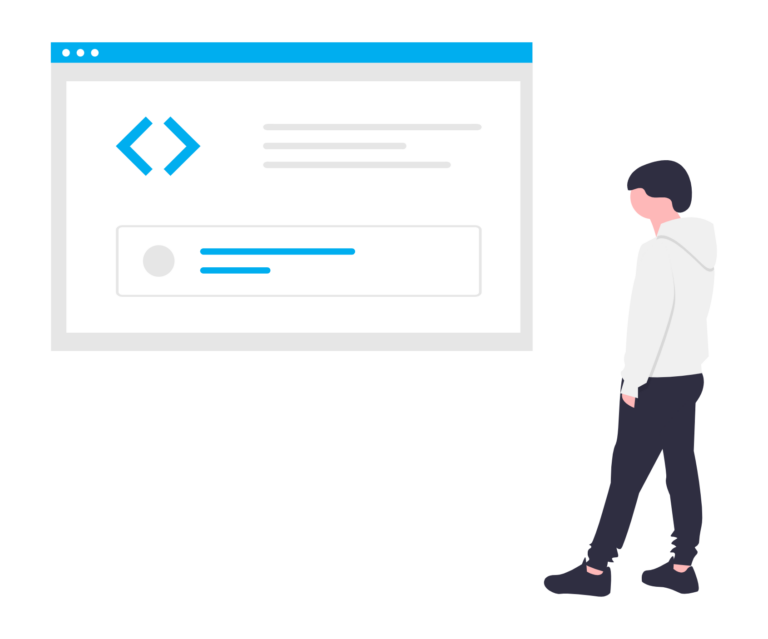Introduction
Building a great website isn’t just about making it look good—it also needs to be easy to find online. That’s where Search Engine Optimization SEO and web development come together. When done right, an SEO-friendly website not only attracts visitors but also helps grow your business over time.
This guide will walk you through essential web development tips and SEO best practices. How to build a website development team. Steps for a smooth website redesign. And what you need to know for a successful website launch. This is your go-to website development checklist with helpful SEO tips for website redesign. No matter if you’re creating a brand-new site for a product or service or giving an old one a fresh look.
Building a Strong Website Development Team
Creating a successful website is a team effort, and each member plays a key role. Having the right people on board ensures your website is both visually appealing and optimized for search engines. Here are the key website development team roles:
- Project Manager: Keeps everything on track, making sure deadlines are met and that the website aligns with your business goals. They act as the bridge between team members and stakeholders, ensuring smooth communication and coordination.
- Web Designer: Focuses on the look and feel of the site, creating a great user experience. They ensure that design elements align with brand identity and appeal to your target audience.
- Web Developer: Builds the technical framework, ensuring the website is fast, functional, and accessible on all devices. They handle coding, database management, and server setup.
- SEO Specialist: Works to improve search rankings by optimizing URL structure, internal links, and technical SEO elements. They conduct keyword research, optimize metadata, and implement best practices to improve website performance.
- Copywriter: Creates compelling copywriting for the website that engages visitors, includes the right keywords, and drives action. Their website copywriting services ensure content is clear, persuasive, and aligned with the business’s goals.
- Marketing Strategist: Unfortunately not always part of the core development team. A marketing expert ensures that the website aligns with the broader business and SEO strategy. They work on landing pages, blog posts, and promotional materials.
When your website development team works together efficiently, you get a site that is not only attractive but also performs well in search engines and meets your business needs.

SEO and Web Development: Best Practices for a High-Performing Website
SEO web development services help businesses create optimized sites that rank well and attract more visitors. If your website is slow, difficult to navigate, or not structured properly for search engines, it won’t perform as well as it could. Here are some key SEO tips for web developers to ensure a high-performing website:
SEO Best Practices for Website Development
- Create a Clear URL Structure: Keep URLs short, descriptive, and free of unnecessary characters. A well-structured URL improves user experience and helps search engines understand the content of your web page.
- Use Internal Links Wisely: Help search engines and users navigate your site easily by linking related pages. Internal linking also spreads page authority and helps boost lower-ranking pages.
- Make Sure Your Site Is Mobile-Friendly: Google rewards mobile-friendly sites, so ensure your site works well on all devices. Use responsive design and test your website on different screen sizes.
- Optimize Page Speed: Slow websites drive users away. Compress images, use caching, and choose a fast hosting provider. Tools like Google PageSpeed Insights can help identify areas for improvement.
- Implement Schema Markup: This helps search engines understand your content. This way they can display richer results in search listings and improve click-through rates.
- Use Google Search Console: This free tool helps monitor your website’s performance and fix SEO issues. Regularly check for errors, broken links, and indexing issues.
- Publish High-Quality Content Regularly: Keep your blog posts and landing pages updated with fresh, valuable content. High-quality content is one of the best long-term SEO strategies.
- Secure Your Website: A secure website (HTTPS) not only improves trust with visitors but is also a ranking factor for Google.
When you follow these SEO web development strategies, you’ll create a website that not only ranks well in search results but also provides a great experience for visitors.

Website Redesign Checklist: How to Improve Your Website Without Losing SEO
A website redesign can breathe new life into your online presence, making it more modern and user-friendly. However, if not handled properly, a redesign can negatively impact your search rankings.
Many businesses wonder, does website redesign affect SEO? The answer is yes—if done incorrectly, it can lead to lost rankings and traffic. But with the right strategies, you can redesign your website without losing SEO value.
Tips for a Successful Website Redesign
- Audit Your Existing Site: Identify high-performing pages so you can preserve their rankings. Use tools like Google Analytics to track traffic and user behavior.
- Follow a Website Redesign SEO Checklist: Plan ahead with steps like setting up 301 redirects and optimizing new content. Ensuring no dead ends is key to maintaining search rankings.
- Maintain URL Structure Where Possible: If changes are necessary, use 301 redirects to prevent broken links and preserve SEO value.
- Update and Optimize Website Copywriting: Ensure all new content is engaging, SEO-friendly, and aligned with your business goals.
- Improve Internal Linking: Keep a logical structure so users and search engines can easily navigate your site. Identify orphan pages and link them correctly.
- Use a Staging Site: Test everything before launching your redesigned site. A staging environment lets you make changes without affecting the live site.
- Perform an SEO Audit After Launch: Use Google Search Console to check for errors, ensure pages are properly indexed, and monitor search performance.
By following these website redesign tips, you can successfully improve your website while preserving search rankings. If you need professional assistance, working with a website redesign agency can help ensure a smooth transition.
Website Launch Checklist: How to Successfully Launch a Website
Launching a website is an exciting milestone, but it requires careful planning. Many businesses ask, what’s the best day of the week to launch a website? While there’s no universal answer, midweek launches (Tuesday to Thursday) tend to perform best, as they allow time for adjustments before the weekend. The best time to launch a website is typically during business hours when your team is available to address any issues.
Steps for a Smooth Website Launch
- Announce the Launch of Your New Website: Use social media, email marketing, and blog posts to build awareness and excitement. A countdown or sneak peeks can generate excitement.
- Test Your Site Thoroughly: Check for broken links, speed issues, and mobile responsiveness. Simulate different user journeys to identify potential problems.
- Ensure All SEO Elements Are in Place: Verify metadata, structured data, and XML sitemaps. Proper indexing ensures search engines can find your pages.
- Monitor Performance Post-Launch: Use Google Search Console and analytics tools to track user behavior and fix issues. Look for sudden traffic drops or ranking fluctuations.
- Consider a Soft Launch: Release the site to a small group first to catch potential problems before the full launch. This can help identify and fix issues before a broader rollout.
- Optimize for Conversions: A website launch is just the beginning—continuously analyze user data and tweak design elements to improve engagement and conversions.
Using this checklist website launch strategy, you’ll avoid common pitfalls and set your new website up for success.
Conclusion
Creating and maintaining a successful website requires a strategic mix of SEO and web development. From assembling the right website development team to optimizing for search engines and managing a website redesign, every step plays a crucial role in long-term success.
By implementing these SEO web development services, leveraging website copywriting, and following structured checklists for website redesign and launch, you can build a high-performing website that supports your business goals and attracts potential customers. Consistently improving your website is always a good idea to ensure it remains competitive and continues to deliver value to your audience.
Are you in the process of planning a website development or redesign and not sure where to start? Share your story or get in touch with one of our experts for a chat.
